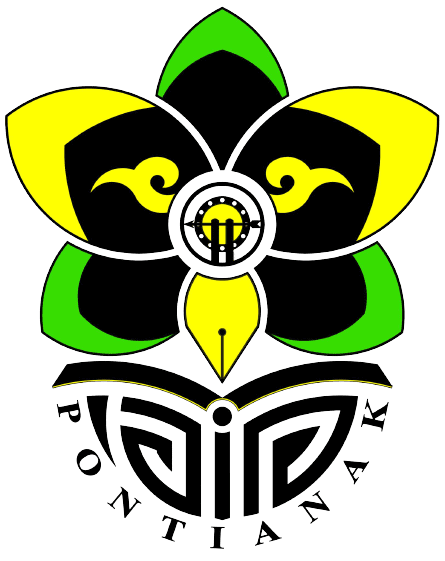The Concept of Islamic Education Ethics in the Puspakerma Text from Ferdinand De Saussure's Semiotic Theory Perspective
DOI:
https://doi.org/10.24260/arfannur.v6i1.3802Keywords:
Ethics, Islamic Education, Semiotics, PuspakermeAbstract
This study aims to explore the concept of Islamic education ethics in the Puspakerme manuscript from the perspective of Ferdinand De Saussure's semiotic theory. The type of research used is library research using a semiotic approach. The primary data source in this study is; translated books of the Puspakerma manuscript. The data analysis used is content analysis and semiotics. The results of the study indicate that the concept of Islamic education ethics in the Puspakerma Manuscript is based on three types of concepts, namely; First, the concept of Islamic education ethics which is theocentric or self-serving to God Almighty and the Prophet Muhammad SAW the beloved of Allah, because of this attitude, faith , knowledge and charity are formed for the salvation of the world and the hereafter ; Second, it is anthropocentric which is divided into three parts, namely; Family ethics, teacher and student ethics, and community ethics; Third, it is cosmocentric. This ethical concept is divided into three parts, the same as anthropocentric ethics. The three parts in question are; ethics towards nature, ethics towards animals, and ethics towards plants.
Downloads
References
Anggraini, L., & Syahidah, L. (2023). Ethics towards Animals.” Basha'ir: Journal of Al-Qur'an Studies and Tafsir (2023). Basha'ir: Journal of Al-Qur'an Studies and Tafsir . https://doi.org/10.47498/bashair.v3i1.895
Arifudin, M. (2014). Education with a Humanitarian Paradigm in Hasan Langgulung's Thoughts. Islamuna: Journal of Islamic Studies , 1 (1). https://doi.org/10.19105/islamuna.v1i1.559
Bahary, A., & Fitroni, K. (2023). TAFSIR INDONESIA (Critical Study of the Interpretation of Basmalah by Kyai Asmuni). Al Burhan: Journal of the Study of Science and Development of Al-Qur'an Culture , 22 (02). https://doi.org/10.53828/alburhan.v22i02.1038
Baiti, N. (2020). The Influence of Education, Work and Parenting Patterns on Children's Independence. JEA (Journal of AUD Education) , 6 (1). https://doi.org/10.18592/jea.v6i1.3590
Bayu Mahendra, V. (2021). The Concept of Teacher Professionalism in the Perspective of Islamic Education. Rayah Al-Islam , 5 (02). https://doi.org/10.37274/rais.v5i02.472
Benny H Hued. (2014). Semiotics and Social and Cultural Dynamics . Bamboo Community.
Chanan, A., Hifza, & Irawan, D. (2024). The Concept of Teacher Personality Competence in the Book of Adabul 'Alim Wal Muta'allim by KHM Hasyim Asy'ari .
David, WMNW (2003). Philosophy and Practice of Islamic Education Syed M. Naquib Al-Attas (I). Mizan.
Duryat, MD and PS (2015). Islamic Education Science, Problems and Its Existence in Surfing in the Global Era .
Endraswara, S. (2013). Literature Research Methodology, epistemology, theory model and application (First). PT. BUKU SERU.
Fatah, A., & Karim, A. (2021). Paradigm of Amali Interpretation : from Theocentric to Anthropocentric. Hermeneutics : Journal of Al-Qur'an Science and Interpretation , 15 (2). https://doi.org/10.21043/hermeneutik.v15i2.12891
Fatimah, S., Hani, SU, & Vionita, BS (2023). Islamic Education from the Perspective of Imam Al Ghazali. Sultan Agung Education Journal , 3 (1). https://doi.org/10.30659/jp-sa.v3i1.29353
Fitriani, R., Ma'mun, TN, & Suryani, E. (nd). Character Education in the Puspakerma Manuscript: A Constructivism Study from Lev Vygotsky's Perspective. 10 (1), 125. https://doi.org/10.37014/jumantara.v10i1.102
HM Idrus, D. (2007). Transliteration and Translation of the Puspakerma Lontar Manuscript . NTB Culture and Tourism Office.
Hakim, L., & Indonesia. West Nusa Tenggara Language Office. (2017). Sasak-Indonesian Dictionary (II, Vol. 3).
Hanafy, S. (2017). Islamic Ethics Studies : God, Man and the Environment. Curiosity , 11 (1).
Hariyono, P., & Aryati, VD (2018). The Relationship Between Humans and Nature. Neo Teknika , 4 (2). https://doi.org/10.37760/neoteknika.v4i2.1224
Jamaluddin. (2017). Contribution of Sasak Manuscripts to the Formation of National Character. Manuskripta , 7 (1).
Mestika Zed. (2004). Literature Research Methods . Indonesian Obor Library Foundation.
Nofita, A. (2023). The Fair Attitude of Educators in the Perspective of Hadith. Hawari: Journal of Islamic Religious and Religious Education, 3 (2). https://doi.org/10.35706/hw.v3i2.7191
Norahmasari, D. (2024). Family Social Support With Self-Confidence Levels of Children with Deafness. Cognicia , 3 (1). https://doi.org/10.22219/cognicia.v3i1.2143
Puspitaningrum, Y. (2020). Concept of Faith, Kufr and Nifaq. Journal of Islamic Education and Social Issues , 18 (2).
Ramdhani, K., Hermawan, I., & Muzaki, IA (2020). Family Education as the First Foundation for Children's Character Education from an Islamic Perspective. Ta'lim , 2 (2). https://doi.org/10.36269/tlm.v2i2.284
Rauf, RA (2023). The Station of Love in Al Ghazaly's View. Ushuluddin Journal: Media for Islamic Thought Dialogue , 25 (1). https://doi.org/10.24252/jumdpi.v25i1.36407
Riyani, NU (2022). The Concept of Wise Attitude as a Form of Emotional Control in Taoist Perspective. Journal of Religious Research, 2 (3). https://doi.org/10.15575/jra.v2i3.17992
Rohman, M., & Hairudin, H. (2018). Concept of Islamic Education Goals Perspective of Socio-cultural Values. Al-Tadzkiyyah: Journal of Islamic Education, 9 (1). https://doi.org/10.24042/atjpi.v9i1.2603
Soimum, Dewi Indrawati, MA, & Suparta, IM (1997). Study of the cultural value of ancient Puspakerma manuscripts (MA Dewi Indrawati (ed.); First). Ministry of Education and Culture.
Sugiono. (2015). Educational Research Methods Quantitative, Qualitative and R&D Approaches . Alfabeta.
Sugiyono. (2017). Quantitative, Qualitative, and R&D Research Methods . Alfabeta.
Tambak, S. (2019). Islamic Social Ethics Education in the Family "Educational Values of Fairness of Parents and Children in Family Socialization from the Perspective of Hadith." Al-Thariqah Journal of Islamic Religious Education, 4 (1). https://doi.org/10.25299/al-thariqah.2019.vol4(1).2910
Tanyid, M. (2014). Ethics in Education: An Ethical Study of Moral Crisis Impacting Education. Jaffray Journal , 12 (2), 235. https://doi.org/10.25278/jj71.v12i2.13
Tesa Maulana, & Tarto. (2022). Wisdom Science: From Dogma to Paradigm (Interpretation of Ma'na-Cum-Maghza, QS Al-Baqarah: 129). MAGHZA: Journal of Al-Qur'an Science and Tafsir , 7 (2). https://doi.org/10.24090/maghza.v7i2.7313
Triani, RA (2021). The Urgency of Generous Attitude According to Hadith. Journal of Religious Research , 1 (1). https://doi.org/10.15575/jra.v1i1.14366
Turmuzi, A. (2020). Oral Tradition of the Puspakrama Bekesah Manuscript (Semiotic Review). PENAOQ : Journal of Literature, Culture and Tourism , Volume 1, .
van der Meij, D. (2011). Sasak Literature at a Glance. Manassa Manuskripta Journal, 1 (1), 17–45.
Van Der Meij, D. (2022). The Syntax of Colophons (N. Balbir & G. Ciotti (eds.); Issue July). De Gruyter. https://doi.org/10.1515/9783110795271


